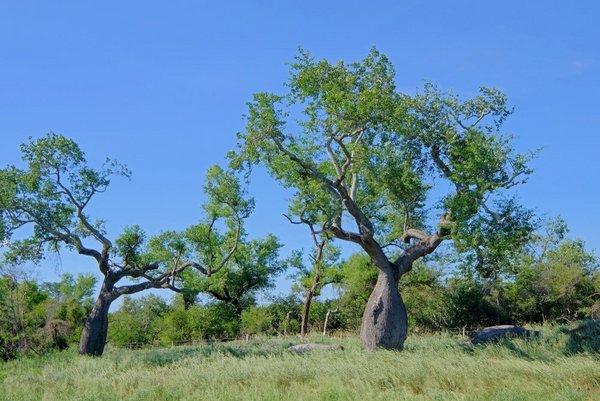- Share this article
- Subscribe to our newsletter
The Gran Chaco is vanishing, but sustainable land use is still possible
The Gran Chaco, a region three times the size of Germany in the heart of South America, is experiencing rapid deforestation and environmental destruction. The main reason for this trend is the expansion of cattle ranching and industrialised agriculture, producing beef and soybeans for international markets. Like for many other dry forests in the Global South, a key question for the Chaco is how to balance agriculture and environmental protection.
A new collaborative study between researchers at the Geography Department of Humboldt University Berlin in Germany and several research institutions in Argentina now shows that solving this challenge is indeed possible.
Using data from satellites and the field on agricultural production, biodiversity and carbon stocks in a spatial optimisation model, the team analysed what sustainable landscapes could look like in the Chaco. “Our most important finding is that there are very strong trade-offs between agriculture and the environment locally, but for the entire landscape, we can balance them to some extent,” explains Dr Elizabeth Law of Humboldt University, and lead-author of the study. “In other words, if we leave enough forest, and depending on which land uses follow forests, we can balance agriculture with the protection of the Chaco’s unique biodiversity and its globally relevant carbon stocks.”
According to the researchers, at least 40 to 50 per cent of the Chaco’s forests would need to be protected and remain unconverted to achieve more sustainable landscapes. “Some land uses, such as soybeans, make it really hard to maintain a balance,” Dr Leandro Macchi from CONICET, Argentina’s research council, explains. “But if these very intensive land uses are mixed with forest and other, less intensive land uses, such as silvopastoral systems, we can keep a lot of the species and carbon – and the ecosystem services they provide.”
However, the researchers also warn that trade-offs become very strong as deforestation progresses. “Deforestation is progressing in many places in the Chaco right now,” notes Humboldt University’s Professor Tobias Kuemmerle. More intensive agriculture also means that more forest is required to compensate for the losses in biodiversity and carbon stocks caused by deforestation. “The more intensive agriculture expands in the region, the harder it will be to arrive at a landscape that we could call sustainability.”
In the Argentinean Chaco, where the study took place, conversion of forest for agriculture has tripled in the last 30 years, and the pressure to convert forests keeps growing. “That we can design landscapes to balance agriculture with the environment is very encouraging, but the window of opportunity is closing very rapidly,” Kuemmerle summarises.
Integrating smallholders to find sustainable solutions
A key finding of the study was also that forest-dependent people, such as smallholders living inside the Chaco’s forests, could be part of the solution. “Smallholder ranching inside forests is widespread in the Argentinean Chaco, and has a long tradition,” Law highlights. “Maintaining these culturally important systems did not prevent our models from finding sustainable solutions – and working with smallholders to increase the sustainability of their activities is therefore a huge opportunity”.
“Our analyses also show that Argentina’s current land-use zoning would allow the expansion of agriculture far beyond sustainable levels. Yet, we are at a time where our national land-use zoning is being revised,” Macchi explains. “Our study provides concrete guidelines on how and where to adjust this zoning to avoid losing what is left in terms of biodiversity and carbon.” Clearly, the time for sustainability planning in the Gran Chaco is now.
(Humboldt University/wi)
Original publication:
Elizabeth A. Law, Leandro Macchi, Matthias Baumann, Julieta Decarre, Gregorio Gavier-Pizarro, Christian Levers, Matías E. Mastrangelo, Francisco Murray, Daniel Müller, María Piquer-Rodríguez, Ricardo Torres, Kerrie A. Wilson, Tobias Kuemmerle (2021): Fading opportunities for mitigating agriculture-environment trade-offs in a south American deforestation hotspot, Biological Conservation, Volume 262, 109310, https://doi.org/10.1016/j.biocon.2021.109310





Add a comment
Be the First to Comment